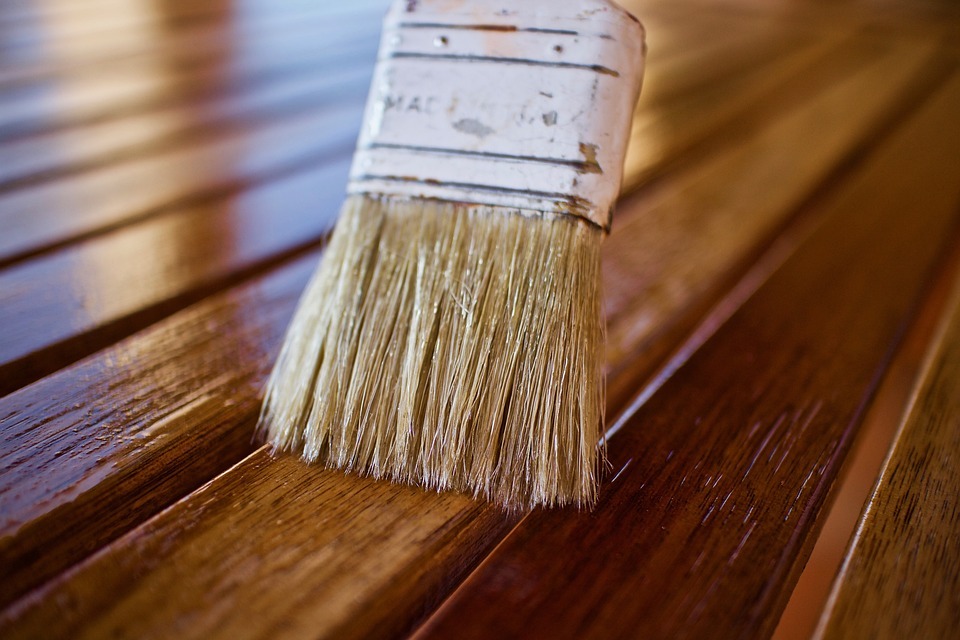How to Remove a Teak Oil Stain from Concrete

Image by sweetlouise is licensed with Pixabay License
Teak oil is a popular choice for maintaining outdoor wooden furniture, providing a rich finish that protects the wood from the elements. However, it can create a challenge when accidentally spilled on concrete surfaces. Removing teak oil stains requires a specific approach to restore the appearance of your concrete. In this guide, we’ll explore what teak oil is, how it stains concrete, and the most effective methods for cleaning oil stains on concrete.
What Is Teak Oil?
Teak oil is a blend of oils and varnishes specifically designed to penetrate and protect teak wood. Known for its ability to enhance the wood’s natural color while providing a durable finish, teak oil is commonly used on outdoor furniture, decks, and marine applications. The oil penetrates deeply into the wood, offering protection against moisture, UV rays, and wear.
While beneficial for wood, teak oil can pose a problem when it comes into contact with other surfaces, such as concrete. Because of its oily nature and deep penetration properties, it can leave behind unsightly stains that are difficult to remove.
How Does Teak Oil Stain Concrete?
Concrete is a porous material, meaning it absorbs liquids quickly. When teak oil spills onto concrete, it seeps into the pores, creating a dark, oily stain. The stain can set rapidly, making it challenging to clean if not addressed promptly. The longer the oil sits on the concrete, the deeper it penetrates, making it even more difficult to remove.
The nature of teak oil prevents water-based cleaning solutions from effectively breaking it down. Instead, specific techniques and cleaning agents are needed to lift the oil from the concrete pores and restore the surface to its original state.
Immediate Steps To Take After a Spill
Acting quickly is crucial when dealing with a teak oil spill on concrete. Here are the immediate steps you should take:
- Blot the spill: Use absorbent materials such as paper towels, rags, or sawdust to blot up as much of the oil as possible. Avoid rubbing, as this can push the oil further into the concrete pores.
- Apply an absorbent powder: Sprinkle a generous amount of an absorbent powder, such as baking soda, cornstarch, or kitty litter over the affected area. These substances help to draw out the oil from the concrete. Allow the absorbent powder to sit on the stain for several hours or overnight.
- Sweep and dispose: Sweep up the powder and dispose of it properly. If the stain persists, proceed to the following cleaning methods.
Effective Methods To Remove Teak Oil Stains
Removing teak oil stains from concrete requires patience and the right tools. Here are several methods to clean teak oil stains effectively from concrete.
Use a Degreaser
A commercial degreaser is a product with a formulation that breaks down and lifts oil from concrete surfaces. Here’s how to use it:
- Apply the degreaser: Pour a generous amount of degreaser onto the stain, ensuring complete coverage.
- Scrub the area: Use a stiff-bristled brush to scrub the stain in a circular motion, working the degreaser into the concrete.
- Let it sit: Allow the degreaser to sit on the stain for the recommended time specified on the product label.
- Rinse thoroughly: Rinse the area with a hose or pressure washer, ensuring all the degreaser and oil residue are washed away.
Use a Homemade Paste
For a DIY solution, you can create a paste using household items:
- Mix the paste: Combine baking soda and dish soap to form a thick paste.
- Apply the paste: Spread the paste over the stain, covering it completely.
- Scrub the stain: Use a brush to scrub the paste into the concrete.
- Let it sit: Allow the paste to sit on the stain for 30 minutes to an hour.
- Rinse and repeat: Rinse the area with water and repeat the process if necessary.
Use a Poultice
A poultice is a combination of an absorbent material and a solvent and can be effective in pulling out deep-set stains. Before using a poultice, try it on a small surface area to observe its effect. Follow these steps to remove the teak oil stain from concrete using a poultice:
- Create the poultice: Mix an absorbent material, such as flour or talcum powder, with a solvent such as mineral spirits or acetone, to form a thick paste.
- Apply the poultice: Spread the poultice over the stain, covering it with plastic wrap and sealing the edges with tape.
- Let it sit: Allow the poultice to sit for 24 hours to draw the oil out of the concrete.
- Remove and rinse: Remove the plastic wrap, scrape off the dried poultice, and rinse the area with water.
Pressure Washing
If the stain persists, you can use a pressure washer to blast away residual oil. This method is best used after you have tried other less aggressive cleaning methods without success:
- Prepare the pressure washer: Set the pressure washer to a medium setting.
- Spray the stain: Hold the nozzle a few inches from the stain, and spray in a back-and-forth motion.
- Check for progress: Inspect the area regularly to ensure the stain is being removed without damaging the concrete.
Restore Your Outdoor Areas Today
Removing teak oil stains from concrete can be challenging, especially if the oil has had time to soak in. While DIY methods can be effective for minor spills, deep-set stains may require multiple treatments for full removal. Using the right cleaning agents, such as degreasers or poultices, can help lift the oil from the concrete’s porous surface. Acting quickly and repeating the cleaning process as needed will improve your chances of restoring the concrete to its original appearance.
